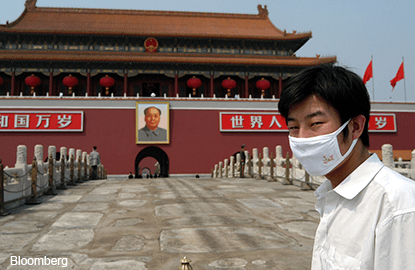
This article first appeared in The Edge Financial Daily, on January 6, 2016.
TURBULENCE in Shanghai stocks has global investors on edge though really it is the Chinese currency they need to be watching to assess the risk of a full-blown contagion.
The reason is simple. Share ownership is still a small part of Chinese household wealth. Price gyrations — like the 7% drop in the CSI 300 index on Monday — do affect market valuations globally. But beyond short-term jitters, the sharp declines do not mean much. Mostly, they are a reflection of pent-up selling pressure, such as the impending removal of a ban on major shareholders’ equity sales.
To a more limited extent, they are a handy barometer of investor despondence over authorities’ seeming inability to stabilise gross domestic product growth at anywhere near their stated 7% target.
But just how that weakness in Chinese demand might reverberate through neighbouring Asian economies — the most likely starting point of any contagion — is the more important story, one that is better told by the 5% drop in the yuan against the US dollar since just before last year’s surprise Aug 11 devaluation.
To see why this slide matters, consider the 800-odd non-Chinese, non-financial companies in Asia that, according to their filings, garner 80% or more of their revenue from China, Europe or America. This motley group of Asian exporters includes Australian commodity companies such as Fortescue Metals, Singapore-based smartphone casing fabricator Hi-P International, nearly all Indian software services companies, and Hartalega Holdings, a Malaysian maker of latex gloves.
Focus next on these exporters’ combined annual net profit, which rose from US$40 billion in 2010 to US$50 billion in 2013, but has since slumped to a little less than US$45 billion (RM194.85 billion). Competing against Chinese rivals who have the advantage of a weaker currency could push some of them out of business, and force many more to fire workers and cancel investments. The more the yuan weakens against its trading partners’ currencies, the greater the risk that weak corporate profitability will infect the region’s banking systems.
This is how the 1997 Asian crisis unfolded, following a 1994 devaluation in the yuan. And while the region’s banks are generally better capitalised than they were back then — with India being a notable exception — it is once again the most obvious way panic could spread quickly through other parts of the continent.
The natural corollary of such a crisis of confidence will be capital outflows, and a sharp depreciation in Asian currencies. To some extent, it might help Asian exporters recoup some of the competitiveness they are losing now to China. But that will be a rather slow and painful adjustment.
To be sure, not all Asian exporters will be equally affected by a weak yuan — Indian software vendors face hardly any competition from rivals in the People’s Republic. But a significant depreciation in the Chinese currency could easily expose other vulnerabilities.
For instance, Indian steel makers are already a disproportionately large source of bad loans for the nation’s poorly run state-owned banks; many more of them could be forced to welsh on their debt if the Chinese yuan depreciates by, say, another 5% this year. Similar fault lines exist in other Asian economies as well. Foreign banks’ loans to Thailand have swelled by 2.6 times since the first quarter of 2009.
Considering lenders are going to be in investors’ cross-hairs if contagion risks do arise, the very threat of a weaker yuan is the big risk for Asia in 2016, much more than vacillating Chinese stock prices.
This column does not necessarily reflect the opinion of Bloomberg LP and its owners.